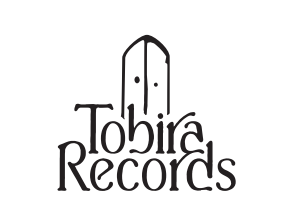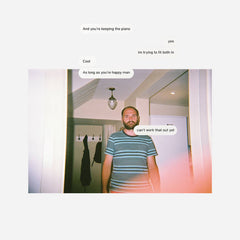クイックビュー
{"id":9006790672634,"title":"Sean McCann \/\/ The Leopard 3xLP+BOOK","handle":"sean-mccann-the-leopard-3x12inch-book","description":"\u003cp\u003eアメリカの実験レーベルRecital主宰Sean McCannが、2025年10月に100部限定でリリースした3枚組レコード+BOOKです。\u003c\/p\u003e\n\u003cp\u003e超大作のオペラ16曲を収録。\u003c\/p\u003e\n\u003cp\u003e以下、レーベルによる解説です。\u003c\/p\u003e\n\u003cp\u003e\u003cem\u003e\"対話、音楽、精巧なサウンドデザインが、自己共食と変容についての物語的なファンタジーに織り込まれています。5年以上の歳月をかけて制作、録音されたこの作品は、2019年の『Puck (Recital)』以来となるMcCannの初のアルバムであり、彼の初のオペラでもあります。このオペラには、作曲家のマーティン・ブレスニック、アーティストのヌール・モバラク、ミュージシャンのマックス・エイルバッカー(Horse Lords)、声優のデヴィッド・ジョージ、クリステル・アビメリが参加しています。McCannは、ほとんどの楽曲を自ら演奏、録音し、すべての音を細心の注意を払って編集しました。\u003c\/em\u003e\u003c\/p\u003e\n\u003cp\u003e\u003cem\u003eオペラは、華麗な序曲で幕を開け、その後、シュールな情景へと突入します。帆船に乗った登場人物たちが、その場しのぎのコンロで自分たちを調理し、食べてしまうのです。8つのシーンを通して、プロットは絶えず溶解し、再結合し、麻薬のような夢のような状態へと誘います。このオペラは、プロットを導き、歪める、幻想的な人物「コピー」によって監督されています。4つの言葉のない間奏では、温室の中でコピーが、各人物を象徴する花々を剪定しながら、古いビクトローラのレコードを再生しています。銀食器の叫び声、じょうろの水しぶき、雷雨、そして各人物がパンに焼き上げられる音が聞こえます。バーバラ・ストロッツィの衝撃的な「Lagrime mie」(1659年)などの華麗な音楽が、空っぽの図書館で、ヌール・モバラクが読むガートルード・スタイン風の呪文とともに演奏されます。オペラは、ヴァイオリンと合唱による、心に残る哀歌的な作品である壮大なコーダで幕を閉じます。\u003c\/em\u003e\u003c\/p\u003e\n\u003cp\u003e\u003cem\u003eオペラには台本に加え、語られないテキストやアートワークを収めた書籍が付属します。書籍の各場面には「コピーパス」が配置されており、これは一種のプロットの背信やテキストの汚点であり、聴き手をプロットの穴へと誘い込み、自ら意味のきらめきを発見させます。\u003c\/em\u003e\u003c\/p\u003e\n\u003cp\u003e\u003cem\u003e『The Leopard 』はラジオドラマ、実験的オペラ、立体映画の中間にある新たな形式を模索します。\"\u003c\/em\u003e\u003c\/p\u003e\n\u003cp\u003e\u003ciframe src=\"https:\/\/bandcamp.com\/EmbeddedPlayer\/album=1628487654\/size=large\/bgcol=ffffff\/linkcol=0687f5\/tracklist=false\/artwork=none\/transparent=true\/\" style=\"border: 0; width: 100%; height: 120px;\"\u003e\u003c\/iframe\u003e\u003c\/p\u003e\n\u003cp\u003eレーベルその他作品は\u003ca href=\"https:\/\/tobirarecords.com\/collections\/recital\"\u003eこちら\u003c\/a\u003e\u003cspan\u003e \u003c\/span\u003e\/\/\/ Click \u003ca href=\"https:\/\/tobirarecords.com\/collections\/recital\"\u003ehere\u003c\/a\u003e to see more Recital releases available at Tobira. \u003c\/p\u003e\n\u003cp\u003e--------------------------------------\u003c\/p\u003e\n\u003cp\u003eAsk us for digital files. \u003cbr\u003e3 x 12\" black vinyl in individual sleeves + p\u003cspan\u003eerfect bound libretto book \u003cmeta charset=\"utf-8\"\u003ewith accompanying texts and artwork (88-pages).\u003c\/span\u003e\u003cbr\u003eEdition of 100 copies. \u003c\/p\u003e\n\u003cp\u003e\u003cstrong\u003eTracklist\u003c\/strong\u003e:\u003c\/p\u003e\n\u003cp class=\"MsoNormal\"\u003e1. Overture 05:57\u003cbr\u003e2. Sailboat 11:15\u003cbr\u003e\u003cspan style=\"font-family: -apple-system, BlinkMacSystemFont, 'San Francisco', 'Segoe UI', Roboto, 'Helvetica Neue', sans-serif; font-size: 0.875rem;\"\u003e3. Copy 1 02:42\u003cbr\u003e\u003c\/span\u003e\u003cspan style=\"font-family: -apple-system, BlinkMacSystemFont, 'San Francisco', 'Segoe UI', Roboto, 'Helvetica Neue', sans-serif; font-size: 0.875rem;\"\u003e4. Cottage 07:12\u003cbr\u003e\u003c\/span\u003e\u003cspan style=\"font-family: -apple-system, BlinkMacSystemFont, 'San Francisco', 'Segoe UI', Roboto, 'Helvetica Neue', sans-serif; font-size: 0.875rem;\"\u003e5. Forest 06:55\u003cbr\u003e\u003c\/span\u003e\u003cspan style=\"font-family: -apple-system, BlinkMacSystemFont, 'San Francisco', 'Segoe UI', Roboto, 'Helvetica Neue', sans-serif; font-size: 0.875rem;\"\u003e6. Copy 2 03:26\u003cbr\u003e\u003c\/span\u003e\u003cspan style=\"font-family: -apple-system, BlinkMacSystemFont, 'San Francisco', 'Segoe UI', Roboto, 'Helvetica Neue', sans-serif; font-size: 0.875rem;\"\u003e7. Tavern 12:41\u003cbr\u003e\u003c\/span\u003e\u003cspan style=\"font-family: -apple-system, BlinkMacSystemFont, 'San Francisco', 'Segoe UI', Roboto, 'Helvetica Neue', sans-serif; font-size: 0.875rem;\"\u003e8. Hotel 05:59\u003cbr\u003e\u003c\/span\u003e9. Copy 3 03:48\u003cbr\u003e10. Library 07:29\u003cbr\u003e\u003cspan style=\"font-family: -apple-system, BlinkMacSystemFont, 'San Francisco', 'Segoe UI', Roboto, 'Helvetica Neue', sans-serif; font-size: 0.875rem;\"\u003e11. Restaurant 06:03\u003cbr\u003e\u003c\/span\u003e\u003cspan style=\"font-family: -apple-system, BlinkMacSystemFont, 'San Francisco', 'Segoe UI', Roboto, 'Helvetica Neue', sans-serif; font-size: 0.875rem;\"\u003e12. Copy 4 03:01\u003cbr\u003e\u003c\/span\u003e\u003cspan style=\"font-family: -apple-system, BlinkMacSystemFont, 'San Francisco', 'Segoe UI', Roboto, 'Helvetica Neue', sans-serif; font-size: 0.875rem;\"\u003e13. Cemetery 08:39\u003cbr\u003e\u003c\/span\u003e14. Coda 04:40\u003c\/p\u003e\n\u003cp\u003eRecital:\u003c\/p\u003e\n\u003cp\u003e\"\u003cmeta charset=\"utf-8\"\u003e\u003cem\u003eSean McCann presents The Leopard, an opera.\u003c\/em\u003e\u003cbr\u003e\u003cbr\u003e\u003cem\u003eDialog, music, and elaborate sound design fold into a narrative fantasy about self-cannibalization and transformation. Written and recorded over five years, this is McCann’s first album since 2019’s Puck (Recital) and his first opera. The opera is voiced by composer Martin Bresnick, artist Nour Mobarak, musician Max Eilbacher [Horse Lords], and voice actors David George and Krystel Abimeri. McCann performed and recorded most of the music himself, meticulously editing every sound.\u003c\/em\u003e\u003cbr\u003e\u003cbr\u003e\u003cem\u003eThe opera opens with an ornate musical overture before plunging into a surreal tableau: characters on a sailboat cooking and consuming themselves over a makeshift stove. Over the course of eight scenes, the plot continually dissolves and recombines, inducing a narcotic dreamstate. The opera is overseen by Copy, a chimerical figure who both guides and distorts the plot. Four wordless interludes feature Copy in a greenhouse, playing old Victrola records while pruning floral incarnations of each persona. One hears screaming silverware, sprays of watering cans, a thunderstorm, and the baking of each character into a loaf of bread. Musical flourishes appear, such as Barbara Strozzi’s devastating Lagrime mie (1659) which is\u003cspan class=\"bcTruncateMore\"\u003e performed in an empty library alongside a Gertrude Stein-esque spoken incantation read by Nour Mobarak. The opera closes with a grand coda; a haunting, elegiac work for violins and choir.\u003cbr\u003e\u003cbr\u003eThe opera is accompanied by a book that contains the libretto along with unspoken texts and artwork. Each scene in the book contains a “Copy path,” a kind of plot betrayal or text smear that beckons the listener to fall inside plot holes and uncover flickers of meaning for themselves.\u003c\/span\u003e\u003c\/em\u003e\u003c\/p\u003e\n\u003cp\u003e\u003cem\u003e\u003cspan class=\"bcTruncateMore\"\u003e\u003cmeta charset=\"utf-8\"\u003e \u003cspan\u003eThe Leopard navigates a new form that lays somewhere between radio-play, experimental opera, and dioramic film.\u003c\/span\u003e\"\u003c\/span\u003e\u003c\/em\u003e\u003c\/p\u003e\n\u003cp\u003eArtist : Sean McCann\u003c\/p\u003e\n\u003cp\u003eLabel : Recital\u003c\/p\u003e\n\u003cp\u003ecat no : R114\u003c\/p\u003e","published_at":"2025-11-19T14:47:43+09:00","created_at":"2025-11-19T11:37:50+09:00","vendor":"Tobira Records","type":"","tags":["ambient","books \/ clothing \/ others","contemporary \/ sound poetry","lp","monooto","neo classical","new","Recital","recommended"],"price":1358000,"price_min":1358000,"price_max":1358000,"available":true,"price_varies":false,"compare_at_price":null,"compare_at_price_min":0,"compare_at_price_max":0,"compare_at_price_varies":false,"variants":[{"id":47980799295738,"title":"Default Title","option1":"Default Title","option2":null,"option3":null,"sku":null,"requires_shipping":true,"taxable":true,"featured_image":null,"available":true,"name":"Sean McCann \/\/ The Leopard 3xLP+BOOK","public_title":null,"options":["Default Title"],"price":1358000,"weight":1000,"compare_at_price":null,"inventory_management":"shopify","barcode":"","requires_selling_plan":false,"selling_plan_allocations":[]}],"images":["\/\/tobirarecords.com\/cdn\/shop\/files\/leo1_036e199a-c54f-4c7e-ac67-69f804914add.jpg?v=1763519672","\/\/tobirarecords.com\/cdn\/shop\/files\/leo2_50c36d9f-6772-417c-bdc3-8ffb5b404007.jpg?v=1763519672","\/\/tobirarecords.com\/cdn\/shop\/files\/leo3_da5bef7b-10fc-418a-aacb-0b9da5fe2273.jpg?v=1763519672","\/\/tobirarecords.com\/cdn\/shop\/files\/leo4.jpg?v=1763519672","\/\/tobirarecords.com\/cdn\/shop\/files\/leo5.jpg?v=1763519672","\/\/tobirarecords.com\/cdn\/shop\/files\/leo6.jpg?v=1763519672","\/\/tobirarecords.com\/cdn\/shop\/files\/leo7.jpg?v=1763519672"],"featured_image":"\/\/tobirarecords.com\/cdn\/shop\/files\/leo1_036e199a-c54f-4c7e-ac67-69f804914add.jpg?v=1763519672","options":["Title"],"media":[{"alt":null,"id":37549009338618,"position":1,"preview_image":{"aspect_ratio":1.0,"height":700,"width":700,"src":"\/\/tobirarecords.com\/cdn\/shop\/files\/leo1_036e199a-c54f-4c7e-ac67-69f804914add.jpg?v=1763519672"},"aspect_ratio":1.0,"height":700,"media_type":"image","src":"\/\/tobirarecords.com\/cdn\/shop\/files\/leo1_036e199a-c54f-4c7e-ac67-69f804914add.jpg?v=1763519672","width":700},{"alt":null,"id":37549009371386,"position":2,"preview_image":{"aspect_ratio":1.33,"height":902,"width":1200,"src":"\/\/tobirarecords.com\/cdn\/shop\/files\/leo2_50c36d9f-6772-417c-bdc3-8ffb5b404007.jpg?v=1763519672"},"aspect_ratio":1.33,"height":902,"media_type":"image","src":"\/\/tobirarecords.com\/cdn\/shop\/files\/leo2_50c36d9f-6772-417c-bdc3-8ffb5b404007.jpg?v=1763519672","width":1200},{"alt":null,"id":37549009404154,"position":3,"preview_image":{"aspect_ratio":1.33,"height":902,"width":1200,"src":"\/\/tobirarecords.com\/cdn\/shop\/files\/leo3_da5bef7b-10fc-418a-aacb-0b9da5fe2273.jpg?v=1763519672"},"aspect_ratio":1.33,"height":902,"media_type":"image","src":"\/\/tobirarecords.com\/cdn\/shop\/files\/leo3_da5bef7b-10fc-418a-aacb-0b9da5fe2273.jpg?v=1763519672","width":1200},{"alt":null,"id":37549009436922,"position":4,"preview_image":{"aspect_ratio":1.33,"height":902,"width":1200,"src":"\/\/tobirarecords.com\/cdn\/shop\/files\/leo4.jpg?v=1763519672"},"aspect_ratio":1.33,"height":902,"media_type":"image","src":"\/\/tobirarecords.com\/cdn\/shop\/files\/leo4.jpg?v=1763519672","width":1200},{"alt":null,"id":37549009469690,"position":5,"preview_image":{"aspect_ratio":1.546,"height":776,"width":1200,"src":"\/\/tobirarecords.com\/cdn\/shop\/files\/leo5.jpg?v=1763519672"},"aspect_ratio":1.546,"height":776,"media_type":"image","src":"\/\/tobirarecords.com\/cdn\/shop\/files\/leo5.jpg?v=1763519672","width":1200},{"alt":null,"id":37549009502458,"position":6,"preview_image":{"aspect_ratio":1.546,"height":776,"width":1200,"src":"\/\/tobirarecords.com\/cdn\/shop\/files\/leo6.jpg?v=1763519672"},"aspect_ratio":1.546,"height":776,"media_type":"image","src":"\/\/tobirarecords.com\/cdn\/shop\/files\/leo6.jpg?v=1763519672","width":1200},{"alt":null,"id":37549009535226,"position":7,"preview_image":{"aspect_ratio":0.75,"height":1200,"width":900,"src":"\/\/tobirarecords.com\/cdn\/shop\/files\/leo7.jpg?v=1763519672"},"aspect_ratio":0.75,"height":1200,"media_type":"image","src":"\/\/tobirarecords.com\/cdn\/shop\/files\/leo7.jpg?v=1763519672","width":900}],"requires_selling_plan":false,"selling_plan_groups":[],"content":"\u003cp\u003eアメリカの実験レーベルRecital主宰Sean McCannが、2025年10月に100部限定でリリースした3枚組レコード+BOOKです。\u003c\/p\u003e\n\u003cp\u003e超大作のオペラ16曲を収録。\u003c\/p\u003e\n\u003cp\u003e以下、レーベルによる解説です。\u003c\/p\u003e\n\u003cp\u003e\u003cem\u003e\"対話、音楽、精巧なサウンドデザインが、自己共食と変容についての物語的なファンタジーに織り込まれています。5年以上の歳月をかけて制作、録音されたこの作品は、2019年の『Puck (Recital)』以来となるMcCannの初のアルバムであり、彼の初のオペラでもあります。このオペラには、作曲家のマーティン・ブレスニック、アーティストのヌール・モバラク、ミュージシャンのマックス・エイルバッカー(Horse Lords)、声優のデヴィッド・ジョージ、クリステル・アビメリが参加しています。McCannは、ほとんどの楽曲を自ら演奏、録音し、すべての音を細心の注意を払って編集しました。\u003c\/em\u003e\u003c\/p\u003e\n\u003cp\u003e\u003cem\u003eオペラは、華麗な序曲で幕を開け、その後、シュールな情景へと突入します。帆船に乗った登場人物たちが、その場しのぎのコンロで自分たちを調理し、食べてしまうのです。8つのシーンを通して、プロットは絶えず溶解し、再結合し、麻薬のような夢のような状態へと誘います。このオペラは、プロットを導き、歪める、幻想的な人物「コピー」によって監督されています。4つの言葉のない間奏では、温室の中でコピーが、各人物を象徴する花々を剪定しながら、古いビクトローラのレコードを再生しています。銀食器の叫び声、じょうろの水しぶき、雷雨、そして各人物がパンに焼き上げられる音が聞こえます。バーバラ・ストロッツィの衝撃的な「Lagrime mie」(1659年)などの華麗な音楽が、空っぽの図書館で、ヌール・モバラクが読むガートルード・スタイン風の呪文とともに演奏されます。オペラは、ヴァイオリンと合唱による、心に残る哀歌的な作品である壮大なコーダで幕を閉じます。\u003c\/em\u003e\u003c\/p\u003e\n\u003cp\u003e\u003cem\u003eオペラには台本に加え、語られないテキストやアートワークを収めた書籍が付属します。書籍の各場面には「コピーパス」が配置されており、これは一種のプロットの背信やテキストの汚点であり、聴き手をプロットの穴へと誘い込み、自ら意味のきらめきを発見させます。\u003c\/em\u003e\u003c\/p\u003e\n\u003cp\u003e\u003cem\u003e『The Leopard 』はラジオドラマ、実験的オペラ、立体映画の中間にある新たな形式を模索します。\"\u003c\/em\u003e\u003c\/p\u003e\n\u003cp\u003e\u003ciframe src=\"https:\/\/bandcamp.com\/EmbeddedPlayer\/album=1628487654\/size=large\/bgcol=ffffff\/linkcol=0687f5\/tracklist=false\/artwork=none\/transparent=true\/\" style=\"border: 0; width: 100%; height: 120px;\"\u003e\u003c\/iframe\u003e\u003c\/p\u003e\n\u003cp\u003eレーベルその他作品は\u003ca href=\"https:\/\/tobirarecords.com\/collections\/recital\"\u003eこちら\u003c\/a\u003e\u003cspan\u003e \u003c\/span\u003e\/\/\/ Click \u003ca href=\"https:\/\/tobirarecords.com\/collections\/recital\"\u003ehere\u003c\/a\u003e to see more Recital releases available at Tobira. \u003c\/p\u003e\n\u003cp\u003e--------------------------------------\u003c\/p\u003e\n\u003cp\u003eAsk us for digital files. \u003cbr\u003e3 x 12\" black vinyl in individual sleeves + p\u003cspan\u003eerfect bound libretto book \u003cmeta charset=\"utf-8\"\u003ewith accompanying texts and artwork (88-pages).\u003c\/span\u003e\u003cbr\u003eEdition of 100 copies. \u003c\/p\u003e\n\u003cp\u003e\u003cstrong\u003eTracklist\u003c\/strong\u003e:\u003c\/p\u003e\n\u003cp class=\"MsoNormal\"\u003e1. Overture 05:57\u003cbr\u003e2. Sailboat 11:15\u003cbr\u003e\u003cspan style=\"font-family: -apple-system, BlinkMacSystemFont, 'San Francisco', 'Segoe UI', Roboto, 'Helvetica Neue', sans-serif; font-size: 0.875rem;\"\u003e3. Copy 1 02:42\u003cbr\u003e\u003c\/span\u003e\u003cspan style=\"font-family: -apple-system, BlinkMacSystemFont, 'San Francisco', 'Segoe UI', Roboto, 'Helvetica Neue', sans-serif; font-size: 0.875rem;\"\u003e4. Cottage 07:12\u003cbr\u003e\u003c\/span\u003e\u003cspan style=\"font-family: -apple-system, BlinkMacSystemFont, 'San Francisco', 'Segoe UI', Roboto, 'Helvetica Neue', sans-serif; font-size: 0.875rem;\"\u003e5. Forest 06:55\u003cbr\u003e\u003c\/span\u003e\u003cspan style=\"font-family: -apple-system, BlinkMacSystemFont, 'San Francisco', 'Segoe UI', Roboto, 'Helvetica Neue', sans-serif; font-size: 0.875rem;\"\u003e6. Copy 2 03:26\u003cbr\u003e\u003c\/span\u003e\u003cspan style=\"font-family: -apple-system, BlinkMacSystemFont, 'San Francisco', 'Segoe UI', Roboto, 'Helvetica Neue', sans-serif; font-size: 0.875rem;\"\u003e7. Tavern 12:41\u003cbr\u003e\u003c\/span\u003e\u003cspan style=\"font-family: -apple-system, BlinkMacSystemFont, 'San Francisco', 'Segoe UI', Roboto, 'Helvetica Neue', sans-serif; font-size: 0.875rem;\"\u003e8. Hotel 05:59\u003cbr\u003e\u003c\/span\u003e9. Copy 3 03:48\u003cbr\u003e10. Library 07:29\u003cbr\u003e\u003cspan style=\"font-family: -apple-system, BlinkMacSystemFont, 'San Francisco', 'Segoe UI', Roboto, 'Helvetica Neue', sans-serif; font-size: 0.875rem;\"\u003e11. Restaurant 06:03\u003cbr\u003e\u003c\/span\u003e\u003cspan style=\"font-family: -apple-system, BlinkMacSystemFont, 'San Francisco', 'Segoe UI', Roboto, 'Helvetica Neue', sans-serif; font-size: 0.875rem;\"\u003e12. Copy 4 03:01\u003cbr\u003e\u003c\/span\u003e\u003cspan style=\"font-family: -apple-system, BlinkMacSystemFont, 'San Francisco', 'Segoe UI', Roboto, 'Helvetica Neue', sans-serif; font-size: 0.875rem;\"\u003e13. Cemetery 08:39\u003cbr\u003e\u003c\/span\u003e14. Coda 04:40\u003c\/p\u003e\n\u003cp\u003eRecital:\u003c\/p\u003e\n\u003cp\u003e\"\u003cmeta charset=\"utf-8\"\u003e\u003cem\u003eSean McCann presents The Leopard, an opera.\u003c\/em\u003e\u003cbr\u003e\u003cbr\u003e\u003cem\u003eDialog, music, and elaborate sound design fold into a narrative fantasy about self-cannibalization and transformation. Written and recorded over five years, this is McCann’s first album since 2019’s Puck (Recital) and his first opera. The opera is voiced by composer Martin Bresnick, artist Nour Mobarak, musician Max Eilbacher [Horse Lords], and voice actors David George and Krystel Abimeri. McCann performed and recorded most of the music himself, meticulously editing every sound.\u003c\/em\u003e\u003cbr\u003e\u003cbr\u003e\u003cem\u003eThe opera opens with an ornate musical overture before plunging into a surreal tableau: characters on a sailboat cooking and consuming themselves over a makeshift stove. Over the course of eight scenes, the plot continually dissolves and recombines, inducing a narcotic dreamstate. The opera is overseen by Copy, a chimerical figure who both guides and distorts the plot. Four wordless interludes feature Copy in a greenhouse, playing old Victrola records while pruning floral incarnations of each persona. One hears screaming silverware, sprays of watering cans, a thunderstorm, and the baking of each character into a loaf of bread. Musical flourishes appear, such as Barbara Strozzi’s devastating Lagrime mie (1659) which is\u003cspan class=\"bcTruncateMore\"\u003e performed in an empty library alongside a Gertrude Stein-esque spoken incantation read by Nour Mobarak. The opera closes with a grand coda; a haunting, elegiac work for violins and choir.\u003cbr\u003e\u003cbr\u003eThe opera is accompanied by a book that contains the libretto along with unspoken texts and artwork. Each scene in the book contains a “Copy path,” a kind of plot betrayal or text smear that beckons the listener to fall inside plot holes and uncover flickers of meaning for themselves.\u003c\/span\u003e\u003c\/em\u003e\u003c\/p\u003e\n\u003cp\u003e\u003cem\u003e\u003cspan class=\"bcTruncateMore\"\u003e\u003cmeta charset=\"utf-8\"\u003e \u003cspan\u003eThe Leopard navigates a new form that lays somewhere between radio-play, experimental opera, and dioramic film.\u003c\/span\u003e\"\u003c\/span\u003e\u003c\/em\u003e\u003c\/p\u003e\n\u003cp\u003eArtist : Sean McCann\u003c\/p\u003e\n\u003cp\u003eLabel : Recital\u003c\/p\u003e\n\u003cp\u003ecat no : R114\u003c\/p\u003e"}








